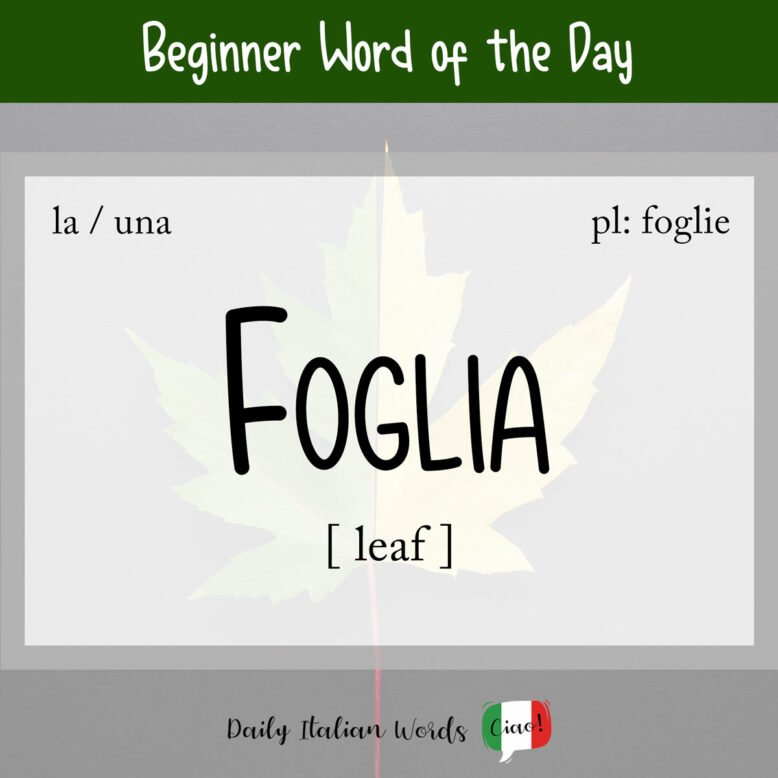Just saying the word leaf – or foglia in Italian – out loud brings to mind visions of lush forests, gentle breezes, and the beauty of nature. In today’s article, we’ll discover the many facets of this word and how to use it in Italian.

Foglia is a feminine noun whose plural form is foglie. It requires the following definite and indefinite articles:
- la foglia = the leaf
- le foglie = the leaves
- una foglia = a leaf
- (delle) foglie = (some) leaves
La foglia è mossa dal vento.
The leaf blows in the wind.
This word shouldn’t be confused with the masculine equivalent foglio (plural: fogli), which refers to various kinds of sheets, especially sheets or pieces of paper.
Ho incollato una foglia su un foglio di carta.
I stuck a leaf onto a piece of paper.
As in English, foglia can also refer to a form of very thin foil, such as gold leaf (foglia d’oro).
The expression mangiare la foglia, which literally translates as “eating the leaf”, is frequently used to underline someone’s ability to read between the lines or understand that which has not been stated explicitly. References to eating leaves can be found in Homer’s Odyssey, specifically in the book in which the hero eats a leaf from the imaginary Moly herb in order to gain immunity from the evil sorceress Circe’s magical powers.

Another famous expression that should be familiar to English ears is tremare come una foglia which means to shake like a leaf.
Tremava sempre come una foglia prima di parlare in pubblico.
He always shook like a leaf before speaking in public.
A creative way of saying that there is no wind is with the expression non si muove neanche una foglia (literally “not even a leaf moves”).
Heather Broster is a graduate with honours in linguistics from the University of Western Ontario. She is an aspiring polyglot, proficient in English and Italian, as well as Japanese, Welsh, and French to varying degrees of fluency. Originally from Toronto, Heather has resided in various countries, notably Italy for a period of six years. Her primary focus lies in the fields of language acquisition, education, and bilingual instruction.


